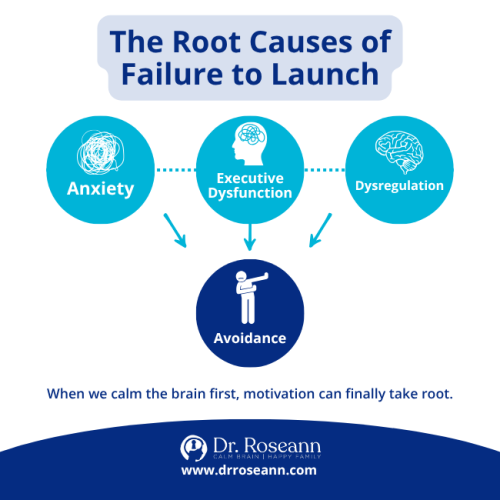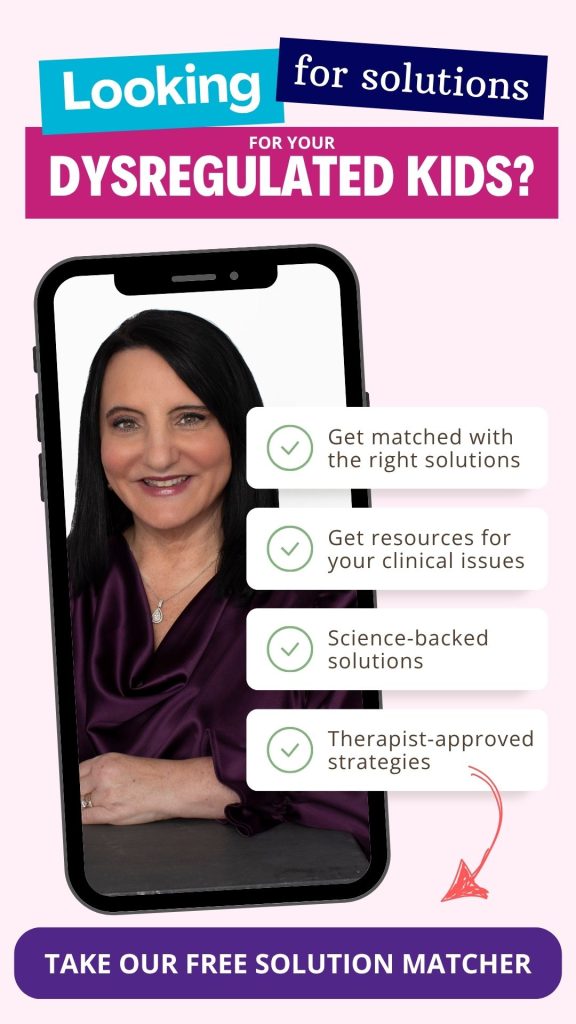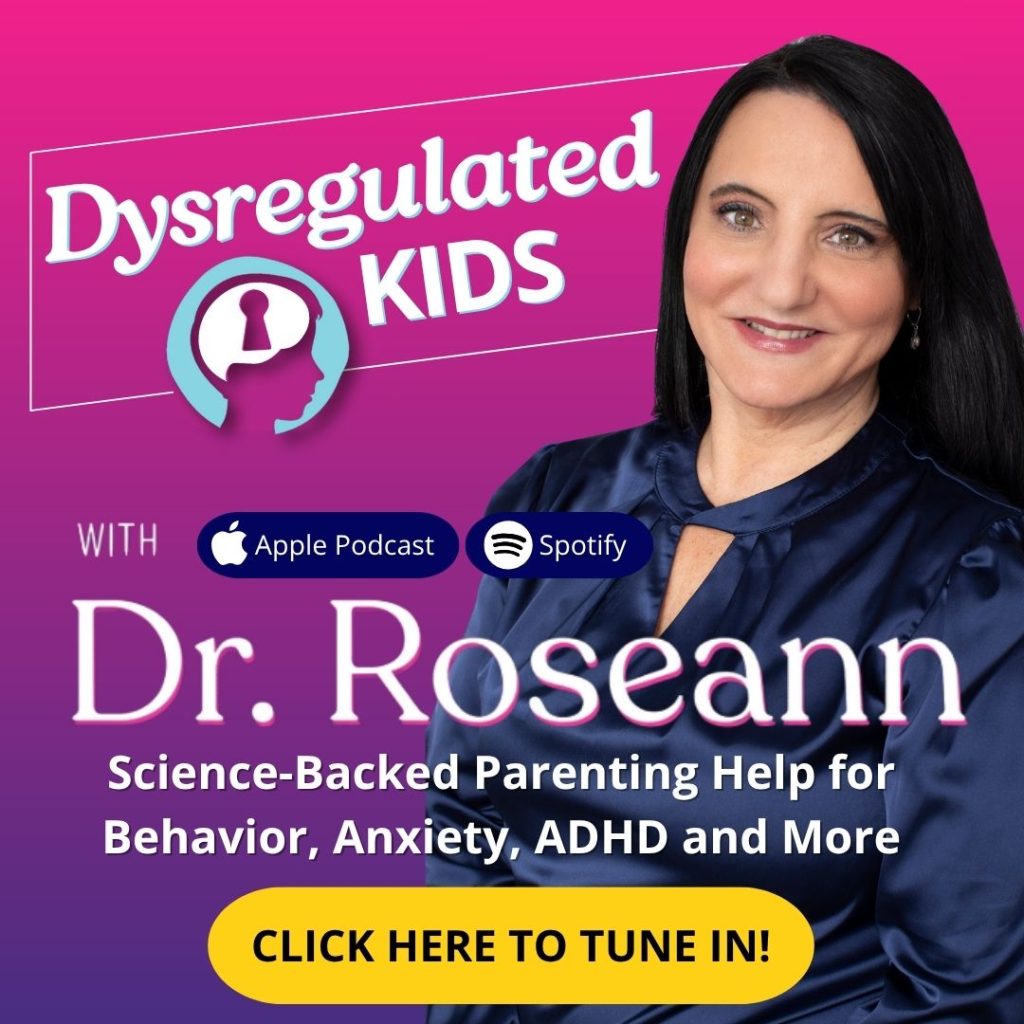Estimated reading time: 9 minutes
Independence isn’t built by pressure—it’s built by a calm brain.
Failure to Launch Syndrome isn’t a character flaw. It’s what happens when anxiety, executive dysfunction, or emotional overload hijack the brain’s ability to plan, decide, and act.
Before your child can “move out” or “move on,” their nervous system needs to feel safe. This article breaks down the root causes, early signs, and evidence-based strategies to help young adults find regulation first—so confidence and direction can finally follow.
Key Takeaways
- Failure to Launch isn’t laziness—it’s nervous system dysregulation, anxiety, or overwhelm.
- Real progress starts when we calm the brain, not when we push independence.
- When we focus on Regulate → Connect → Correct™, we help young adults find calm, confidence, and direction.
- You’re not failing—your child just needs support to get unstuck.
What Is Failure to Launch Syndrome and Why It Happens
Many parents describe their young adult as “stuck”. They may have finished school but still live at home, avoid work, or seem lost.
But what looks like a lack of motivation is often nervous system dysregulation—when the brain stays in survival mode, it’s hard to plan, focus, or move forward. It’s not laziness. It’s actually a dysregulated brain. And that’s something we can calm and support.
Common root causes include:
- Chronic anxiety or avoidance
- Depression or low motivation
- Overwhelm from long-term stress
- Executive function challenges
- Overprotection or enabling patterns
- Unresolved trauma or perfectionism
Read more: Failure to Launch Meaning and Understanding Its Effect on Young Adults

11 Warning Signs Your Adult Child Has Failure to Launch Syndrome
Every parent notices the signs a little differently — some young adults shut down, others lash out. What looks like defiance often runs deeper. These behaviors come from struggles with emotional regulation, not apathy or disobedience (Miller & Racine, 2022).
Their nervous system is on high alert, caught between craving independence and fearing it. You see it in the quiet moments — the avoidance, the endless scrolling, the half-finished plans.
It isn’t laziness; it’s a brain asking for safety. What you see as behavior is really dysregulation — the nervous system’s SOS.
11 Warning Signs of Failure to Launch Syndrome
- Avoiding work, school, or responsibilities
- Hours lost gaming, scrolling, or sleeping
- Emotional outbursts, irritability, or withdrawal
- Struggling with decisions or follow-through
- Resistance to therapy, structure, or limits
- Dependence on parents for daily needs
- Fear of failure and low self-worth
- Isolation or anxiety about social judgment
- Physical complaints — fatigue, headaches, vague pain
- Chronic procrastination, even on simple tasks
- Anxiety spikes when independence feels near
Parent Story
Emily, a mom I once worked with, described her 23-year-old son as “stuck in a fog.” He spent months gaming alone. When she realized his brain wasn’t lazy but stressed, everything shifted.
She stopped pushing and started co-regulating — breathing beside him, speaking gently, re-introducing structure one step at a time. Within weeks, he began improving. Taking walks, showing interest in work, and even laughing again.
That’s what happens when parents calm first. You build a bridge from chaos to connection. Because behavior is communication — the brain’s way of saying, “I need safety before I can grow.”
Read more: 11 Warning Signs your Adult Child Has Failure to Launch Syndrome
How Anxiety and Depression Impact Young Adults
Anxiety and depression often drive Failure to Launch. When parents push harder, young adults retreat further.
What Anxiety Can Look Like
- Fear of failure → avoidance of all effort
- Overthinking → analysis paralysis
- Perfectionism → procrastination
- Panic or shutdown when facing change
What Depression Can Look Like
- Chronic fatigue or oversleeping
- Loss of interest or motivation
- Hopeless or flat mood
- Emotional withdrawal
Parent Story:
Maria’s 21-year-old daughter couldn’t bring herself to apply for jobs, even after months of therapy. Once they focused on calming her nervous system — with daily breathing, gentle PEMF, and steady routines — her motivation slowly returned.
You can’t talk a dysregulated brain out of anxiety or depression. It needs regulation first (Hofmann et al., 2012).
Read more: Failure to Launch: How Anxiety and Depression Impacts Young Adults

How to Overcome Failure to Launch Syndrome: Evidence-Based Treatment Approaches
Healing begins with regulation — not lectures or ultimatums.
Step 1 – Regulate
Start with Regulation First Parenting™ to calm the nervous system.
- Breathing and sensory tools (CALMS Dysregulation Protocol)
- Co-regulation — your calm helps theirs
- Movement and rhythm — walks, drumming, gentle exercise
- Support sleep, nutrition, and detox for brain balance
Step 2 – Connect
Safety grows through connection.
- Have open, judgment-free talks
- Express confidence in their ability to grow
- Listen more than you advise
- Use humor and shared memories to rebuild trust
Step 3 – Correct
Correction only works when the brain feels calm and safe.
- Set clear, compassionate expectations
- Encourage micro-goals (one task or job step at a time)
- Use accountability without shame
- Celebrate effort, not perfection
Calm and connection activate the brain’s capacity for change (Porges, 2011).
Read more: How to Overcome Failure to Launch Syndrome and Pathological Demand Avoidance
What to Do When Your Adult Child Has Failure to Launch: Parent Action Guide
Understanding what’s beneath the surface changes everything. Most parents rush in trying to “fix” or “motivate,” yet a brain on high alert can’t plan.
When the nervous system goes haywire, the prefrontal cortex—the brain’s control tower—essentially powers down. That’s why your young adult may want progress but feel frozen instead (Arnsten, 2009).
How to Shift from Judgment to Understanding
- Swap “Why are you so lazy?” for “What feels hard right now?”
- Create predictability with steady routines—meals, mornings, and family time.
- Model calm—your nervous system sets the tone for theirs.
- Celebrate small steps; consistency rewires confidence.
Parents often ask, “Where do I even start?” The truth is, progress begins with one calm step at a time.
Your Action Plan
- Pause before reacting — remember, behavior communicates what words can’t.
- Co-regulate daily — your grounded energy helps reset their nervous system.
- Build structure — steady routines anchor a sense of safety.
- Choose therapies that target regulation — neurofeedback, CALM PEMF™, or somatic work.
- Rekindle purpose with small, doable goals — volunteering, part-time jobs, creative projects.
- Use collaborative language: “Let’s figure this out together,” not “You need to do better.”
- Focus on effort, not perfection — even small steps signal momentum.
Your calm is the catalyst. When you regulate, your child’s brain follows (Lindsey, 2021).
Read more: What to Do With A Failure to Launch Child
FAQs
Is Failure to Launch a mental illness?
No. It’s not a diagnosis—it’s a pattern that often stems from anxiety, depression, or dysregulation. Addressing the nervous system first allows healing to begin.
Should I push my adult child to move out?
Pushing rarely works. Focus on small steps toward independence—part-time work, chores, or therapy—while modeling calm and consistency.
How can I tell if my child’s resistance is anxiety or defiance?
If their reactions seem extreme or avoidant rather than willful, it’s likely anxiety-driven. Remember: behavior is communication.
What therapies help most with Failure to Launch?
Neurofeedback, QEEG-guided brain mapping, CALM PEMF™, and somatic or CBT therapies that target regulation—not just motivation—tend to be most effective.
How long does it take for change to happen?
Progress depends on the child’s nervous system stability and family consistency. With regulation-first strategies, small wins usually appear within weeks.
Citations
Arnsten A. F. (2009). Stress signalling pathways that impair prefrontal cortex structure and function. Nature reviews. Neuroscience, 10(6), 410–422. https://doi.org/10.1038/nrn2648
Hofmann, S. G., Sawyer, A. T., Fang, A., & Asnaani, A. (2012). Emotion dysregulation model of mood and anxiety disorders. Depression and anxiety, 29(5), 409–416. https://doi.org/10.1002/da.21888
Lindsey E. W. (2021). Emotion Regulation with Parents and Friends and Adolescent Internalizing and Externalizing Behavior. Children (Basel, Switzerland), 8(4), 299. https://doi.org/10.3390/children8040299
Miller, A. E., & Racine, S. E. (2022). Emotion regulation difficulties as common and unique predictors of impulsive behaviors in university students. Journal of American College Health, 70(5), 1387–1395. https://doi.org/10.1080/07448481.2020.1799804
Porges, S. W. (2011). The polyvagal theory: Neurophysiological foundations of emotions, attachment, communication, and self-regulation. W. W. Norton & Company.
Shields, G. S., Sazma, M. A., & Yonelinas, A. P. (2016). The effects of acute stress on core executive functions: A meta-analysis and comparison with cortisol. Neuroscience and biobehavioral reviews, 68, 651–668. https://doi.org/10.1016/j.neubiorev.2016.06.038
Always remember… “Calm Brain, Happy Family™”
Disclaimer: This article is not intended to give health advice and it is recommended to consult with a physician before beginning any new wellness regime. *The effectiveness of diagnosis and treatment varies by patient and condition. Dr. Roseann Capanna-Hodge, LLC does not guarantee certain results.
Are you looking for SOLUTIONS for your struggling child or teen?
Dr. Roseann and her team are all about science-backed solutions, so you are in the right place!










